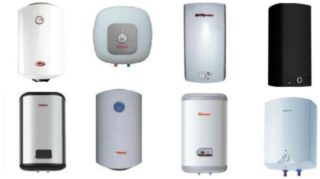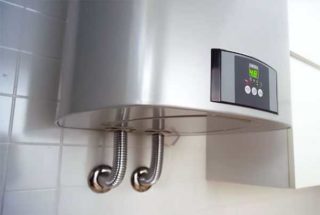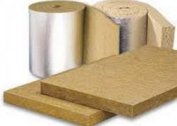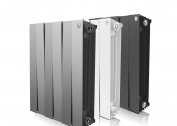It is impossible to imagine a person’s life without utilities, one of which is hot water supply. However, this service is not available everywhere, plus seasonality and emergency situations. The installation of an electric water heater allows you not to depend on these factors, having at your disposal an adequate supply of hot liquid at any time of the year or day. To install an electric boiler in your apartment, you do not need to get permission. When choosing, a number of criteria should be taken into account, so it is recommended that you familiarize yourself with the designs, device, volume and other indicators of the equipment on sale.
Varieties of electric boilers
Electric water heaters on sale vary in power, capacity, orientation, mounting method and types of heating elements. The main difference is the design of the equipment.
Household boilers are divided into the following categories:
- Cumulative. If you look at the device in the context, it resembles a food thermos. The product consists of a tank and an outer casing, between which is insulating material. Water is heated by a heating element of open or closed type. The temperature level is controlled and regulated by a thermostat, which turns the power on and off when the set value is reached. The non-return valve prevents fluid from flowing back into the pipeline and allows it to be vented at a critical tank pressure. The power of the products varies between 1.2-2.0 kW with a capacity of 50-150 liters. The electric floor boiler can have a capacity of 300 l and a heating element of 3 kW. Since a valve is installed in the equipment, a high pressure is required for its operation.
- Flowing. Products of this type are more compact, but consume more electricity. Inside the case there is a tubular electric heater with a power of up to 5 kW. Based on this, it is necessary to carefully approach the issue of laying wiring to the device. As a rule, a separate line is made for flowing devices directly from the distribution panel. The advantage of such heaters is that there is no need to lay a pipeline to connect them. Products can be connected to a kitchen sink or instead of a faucet in the bathroom.
- Combined. An electric heater for heating a house provides recirculation of hot water in a system consisting of piping, radiators and an expansion tank. At the same time, a double-circuit electric boiler provides plumbing consumers with hot water passing through the built-in heating element or from the tank. Products of this type are large and powerful.
To make the right choice of an electric water boiler for a bath, you need to make accurate calculations of the need for hot water and evaluate the features of the room.
Pros and cons of using
Modern boilers have such advantages:
- A wide variety of models.
- Thermal fluid sanitation. Under the influence of high temperature in the tank is the destruction of pathogens. The water in the container does not deteriorate, even if the product is not used for several days.
- Excellent thermal insulation qualities of storage models. Frequent heating is not required, since cooling takes place at the level of 1 degree per hour.
- Independence from seasons and breakdowns on communal lines.Hot water in the house is available all year round and at any time of the day.
- The ability to adjust the heating temperature. This reduces energy consumption and extends the life of the device.
- Safety. The electrical circuit of the boiler is simple and reliable. With proper assembly and maintenance, electric shock is not possible. Fasteners are powerful, made with a double margin of safety.
- Affordable price. The goods can be purchased by people with low incomes.
Domestic water heaters also have their drawbacks:
- The bulkiness of storage devices. They take up a lot of space, limiting the functionality of the room.
- A long period of time for heating cold water after a product is idle in standby or conservation mode.
- High electricity consumption. Heating water with a heating element costs several times more than with natural gas.
- The need for frequent maintenance. The tank and the heating element require regular descaling and the replacement of the magnesium anode.
Boilers operating from the network do not lose their popularity, as they continue to be indispensable and universal devices for producing hot water.
Criterias of choice
 It is recommended to pay attention to such criteria:
It is recommended to pay attention to such criteria:
- Way of fastening. If there are practically no restrictions on floor models, then with wall models it is more and more complicated. Only heavy concrete walls can support the weight of a water-filled appliance. Wood, brick and gas blocks are not suitable for this.
- Heater power. Connecting to sockets or mounting boxes allows products up to 1.5 kW. If the power is higher, the switching devices will not stand up or will have to lay a new line.
- The material of manufacture. Standard tanks are made of black iron with glass spraying. The service life of such tanks is 3-5 years. It is better to take boilers with stainless steel tanks, the resource of which is almost unlimited.
- Availability of protection. Devices with automatic shutdown should be purchased in case of breakdown to the case or short circuit.
- The reliability of the manufacturer. Priority should be given to products of well-known brands, without fail checking the availability of a quality certificate.
- Orientation in space. On sale are vertical and horizontal models. They do not differ in functionality, but the location option will help to overcome some installation difficulties.
If you follow these recommendations, the heater will last a long time, efficiently and safely completing the tasks assigned to it.
Connecting the boiler to the mains
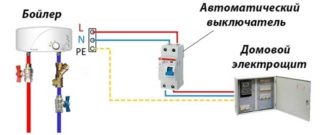 Connecting the boiler to the power grid is a fairly simple event, which even a beginner can easily cope with. To begin with, you should choose a method of supplying energy to the device. It can be an ordinary socket or a packet switch installed on a separate line. The second option is more preferable, convenient and safe, but involves an increase in time and effort, since it is necessary to first lay, then close the strobes, and then restore the finish. A ground line should also be drawn. But in most of the apartment buildings of the old construction, such an opportunity is absent, since the line either was not laid, or for decades it became unusable.
Connecting the boiler to the power grid is a fairly simple event, which even a beginner can easily cope with. To begin with, you should choose a method of supplying energy to the device. It can be an ordinary socket or a packet switch installed on a separate line. The second option is more preferable, convenient and safe, but involves an increase in time and effort, since it is necessary to first lay, then close the strobes, and then restore the finish. A ground line should also be drawn. But in most of the apartment buildings of the old construction, such an opportunity is absent, since the line either was not laid, or for decades it became unusable.
To connect the boiler to electricity without grounding, you must perform the following steps:
- Fix the product on the floor or on the wall.
- Lay the line, install the packet switch. It is better to use a cable with copper conductors that are distinguished by the best technical characteristics.
- Remove the plastic cover from the boiler. Disconnect the wires from the indicator.
- Cut insulation from wires by 10-12 mm. Spin the bars and solder them. This will protect the metal from oxidation and improve the quality of contacts. The green-yellow colored ground wire must be twisted and wrapped with insulation tape.
- Loosen the fixing bolts on the circuit board.Insert the ends of the wires into the holes until they stop and tighten the bolts. At the end, pull the wires towards you to make sure the connection is good.
- Insert the indicator contacts into the slots, attach the cover and fix it to the housing.
- Turn off the power on the shield, connect the cable to the line in the mounting block. If it is made of aluminum, a special tire should be used in a plastic case.
After connecting, the boiler must be filled with water, and then apply voltage to the device. If everything is done correctly, the indicator will light up, the arrow of the thermometer will slowly change its position. Evidence that the heater is heating is also an apartment meter, showing high electricity consumption.
User manual
Water heaters do not require daily maintenance, but if used improperly, they quickly become worthless. Do not set the temperature above 70 degrees, as this accelerates the processes of corrosion and plaque formation. If the plug is heated in the socket of electric heaters, this is a sign of poor contact or a power mismatch. It is necessary to replace the products, clean and tighten the wires in them tightly. Depending on the acidity of the water, the anode should be changed every 6-12 months.
Quality rating of boilers
Rating of electric boilers in quality:
- Buderus (Germany);
- Bosch (Germany);
- Mora (Czech Republic);
- Proterm (Czech Republic);
- Galmet (Poland);
- Kospel (Poland);
- Ariston (Italy).
Products are of high build quality, reliability and long life.
